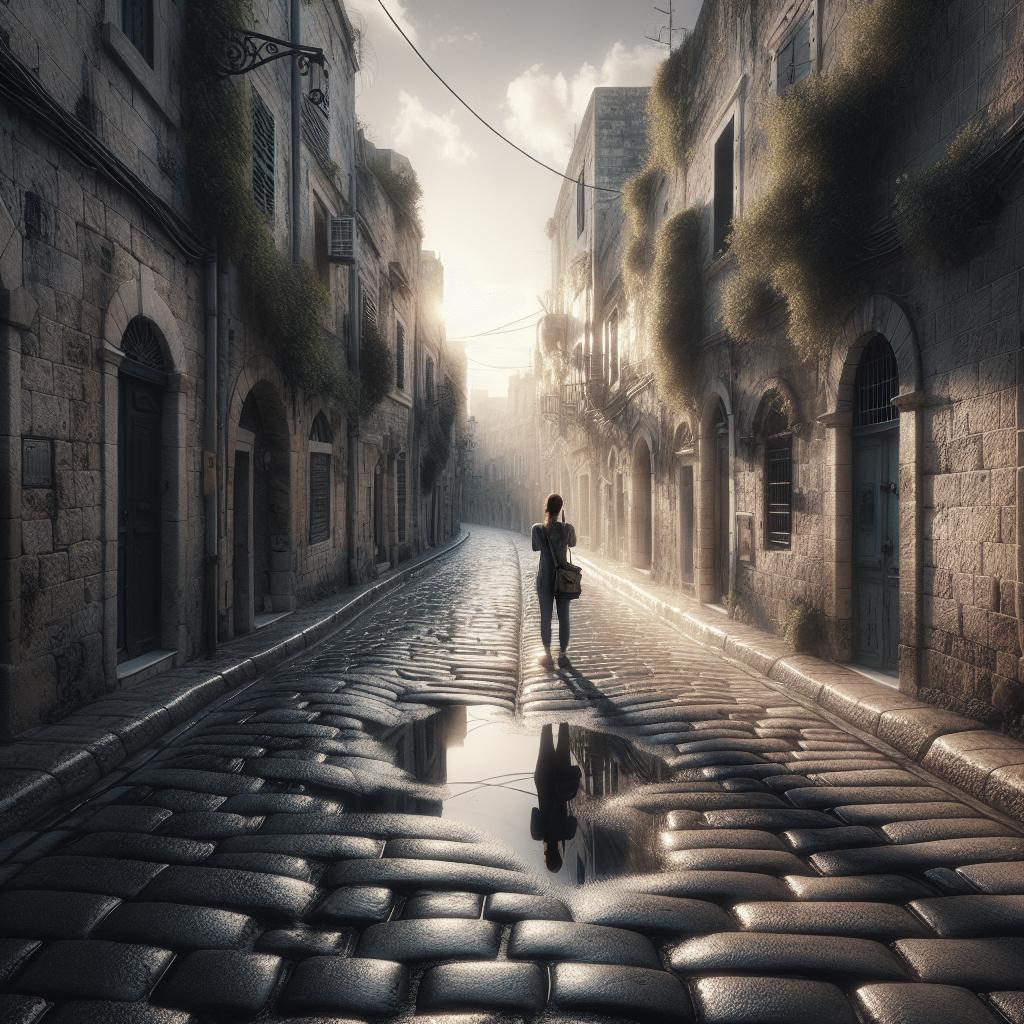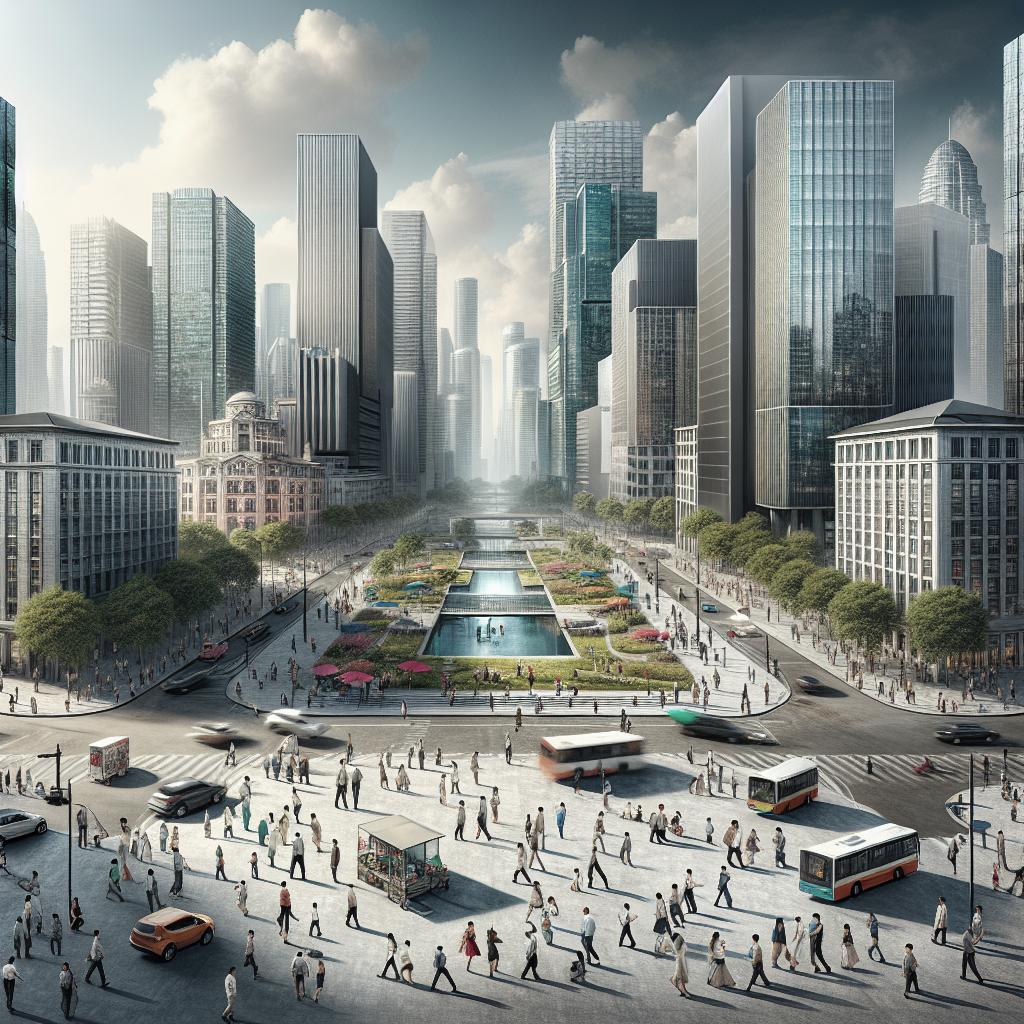<>
Urban photography is a thrilling genre that captures the dynamism and vibrancy of city life. By mastering a few critical camera settings, photographers can elevate their urban shots from ordinary to extraordinary. In this blog post, we will explore the optimal settings and tools for urban photography. We will start by discussing the best types of cameras suited for this genre, followed by how to effectively set up your camera. Continuous focus and white balance will also be delved into to ensure your images are sharp and color-accurate. Additionally, we will cover the types of lenses that can help you achieve different effects and perspectives. Finally, for those who prefer a more automatic approach, we’ll look at how shooting in automatic mode can still yield impressive results. Let’s dive in and explore these elements to capture the essence of city life through your lens.
Cameras
Choosing the right camera is the first step to mastering urban photography. While both DSLRs and mirrorless cameras provide excellent image quality, mirrorless cameras are often preferred for their lighter weight and compact size, making them ideal for navigating bustling city streets. Cameras like the Sony A7 III or the Fujifilm X-T4 are excellent choices due to their superior autofocus systems and low-light performance. Another factor to consider is the camera’s sensor size. Full-frame sensors are beneficial because they capture more light and detail, which is crucial in diverse lighting conditions, from the bright sunlight reflecting off skyscrapers to the dim atmosphere of a foggy alleyway. However, APS-C sensors are more affordable and offer a compact form factor, making them a viable option for travel and urban photography. Ultimately, the best camera is one that balances image quality, functionality, and portability. Remember, it’s not just about the body of the camera but also how it complements your style and meets your practical needs while shooting in urban environments.
Setting Up Your Camera
Setting up your camera correctly can make or break your urban photography efforts. Start by adjusting your ISO settings. Urban environments often have varying light conditions, so an ISO range of 100-3200 helps in capturing clear, noise-free images. Lower ISO settings are ideal for bright daylight, while higher settings are crucial for night shots. Next, prioritize your aperture settings. For architectural shots or wide cityscapes, a smaller aperture (f/8 to f/16) will ensure a greater depth of field, keeping more of the image in focus. Conversely, a larger aperture (f/1.8 to f/2.8) is perfect for isolating subjects and creating beautiful bokeh effects.
To break this down:
1. ISO Settings : Adjust between 100-3200 based on lighting conditions. 2. Aperture : Use smaller apertures (higher f-numbers) for depth and larger apertures (lower f-numbers) for subject isolation. 3. Shutter Speed : A fast shutter speed (1/250s or faster) will freeze motion, crucial for capturing bustling streets, whereas slower speeds can introduce motion blur for creative effects. These foundational settings will help you adapt to the ever-changing conditions typical of urban settings, making sure you’re ready to seize the perfect shot at any moment.
Continuous Focus
In urban photography, capturing moving subjects—a bike speeding by, a pedestrian walking, or cars in traffic—is often essential. Continuous focus, also known as autofocus continuous (AF-C) or AI Servo, is a feature that tracks moving subjects. This setting is invaluable in urban scenarios where you seldom have a second chance to capture a moment. To utilize continuous focus, simply set your camera to AF-C mode. Once you lock focus on your subject, the camera will continuously adjust the focus as the subject moves. This is particularly useful for street photography, where the subject’s distance from the camera is constantly changing. Remember, continuous focus is most effective with a fast and responsive autofocus system. Cameras like the Sony A7 series or the Canon EOS R series, known for their advanced autofocus capabilities, make excellent tools for dynamic urban photography. Mastering continuous focus enables you to maintain sharp and in-focus images, even in the bustling, unpredictable environment of the city.
White Balance
Getting the right white balance is crucial for accurate color representation in urban photography. Cities are lit by a mix of different light sources, from the warm glow of street lamps to the cooler tones of neon signs and daylight. Incorrect white balance can make your images look unnatural and distort the atmosphere you are trying to capture. Most cameras offer several white balance presets like daylight, shade, tungsten, and fluorescent. While these presets can be useful, setting a custom white balance is often more precise. To set a custom white balance, use a gray card or a neutral white surface to calibrate the camera to the specific lighting conditions. Additionally, shooting in RAW format gives you more flexibility in post-processing. Even if the white balance is a bit off in-camera, RAW files allow you to adjust it later without degrading image quality. Mastering white balance ensures your urban scenes are depicted with the truest colors, helping to convey the real mood and ambiance of the city.
Lenses
Choosing the right lens is just as important as choosing the right camera. Wide-angle lenses (16-35mm) are excellent for capturing the breadth of cityscapes, emphasizing tall buildings, and fitting expansive scenes into the frame. These lenses are also great for architectural photography, allowing you to play with perspectives and geometric compositions. On the other hand, prime lenses with larger apertures, such as the 50mm f/1.8, are beneficial for street photography. They provide a natural field of view and allow for beautiful background blur, making your subject stand out against the urban backdrop. Telephoto lenses (70-200mm) are helpful for capturing distant subjects or isolating details in a busy scene. However, they are typically heavier and less convenient for handheld shooting over extended periods. A versatile zoom lens, like the 24-70mm, offers a good balance between wide-angle and telephoto capabilities, providing flexibility and convenience. Overall, having a selection of lenses allows you to be prepared for various scenarios, enabling you to creatively capture the essence of urban life.
Shooting in Automatic Mode
While manual settings give you full control over your image, automatic mode can be incredibly useful for beginners or when you’re in a hurry. Modern cameras are equipped with intelligent automatic settings that adjust shutter speed, aperture, and ISO based on the scene. For instance, most cameras have a “Scene Intelligent Auto” mode that analyzes the scene and tweaks the settings to capture the best possible image. Though it may not always be perfect, it’s surprisingly reliable, especially when you need to react quickly to changing scenes or fleeting moments. Additionally, using automatic mode can still yield professional results if you focus on composition and framing. Pay attention to leading lines, the rule of thirds, and interesting subjects to create compelling images. Remember, automatic mode should not be a crutch but a tool to help you get the shot when manual adjustments are not feasible. It enables you to be flexible and responsive, capturing the city’s pulse as it unfolds before you.
| Aspect | Details |
|---|---|
| Cameras | DSLR or mirrorless, full-frame or APS-C sensors. |
| ISO Settings | Range of 100-3200 based on lighting conditions. |
| Aperture | Smaller (f/8 to f/16) for depth; larger (f/1.8 to f/2.8) for subject isolation. |
| Shutter Speed | Fast for freezing motion; slow for creative blur. |
| Continuous Focus | Use AF-C mode for tracking moving subjects. |
| White Balance | Use presets or custom settings for accurate colors. |
| Lenses | Wide-angle, prime, telephoto, and versatile zoom lenses. |
| Automatic Mode | Utilize intelligent auto settings for quick adjustments. |
By mastering these settings and tools, you’ll be well-equipped to capture the dynamic and ever-evolving world of urban photography.


